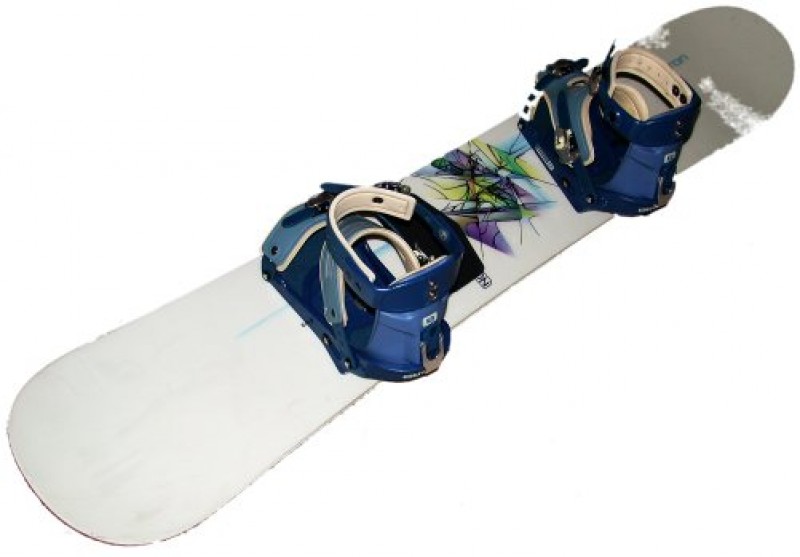
24 Nov Jak prawidłowo dobrać sprzęt snowboardowy?
Kryteria wyboru sprzętu
Dla osób, które rozpoczynają swoją przygodę ze snowboardem oraz dla tych już bardziej zaawansowanych przygotowaliśmy krótki poradnik związany z doborem sprzętu. Najważniesze rzeczy to przy doborze sprzętu to określenie swojego poziomu zaawansowania, stylu jazdy jaki chcemy uprawiać oraz to ile chcemy wydać. Odpowiedzi na te pytania znajdziesz w naszym tekście – zapraszamy do czytania.
Deska snowboardowa
Początkującym polecamy wypożyczyć deskę. Wypożyczenie snowboardu pozwoli Ci cieszyć się pierwszymi ślizgami, bez obaw o zniszczenie deski. Po drugie będziesz mógł wybróbować kilka desek, co na pewno pozwoli Ci właściwie wydać niemałe pieniądze w przyszłości. Wypożyczalnię znajdziesz na naszym ośrodku snowboardowym. Przed zakupem deski warto zastanowić się nad tymi kryteriami.
Jak duże masz doświadczenie?
Przyjmijmy dla naszych potrzeb 3 poziomy zaawansowania:
- Początkujący – jeszcze nigdy nie miałeś deski lub masz za sobą kilka dni jazdy.
- Średniozaawansowany – czujesz się pewnie na standarowych stokach i próbujesz pierwszych skoków.
- Zaawansowany – jeździsz w każdych warunkach i na każdej trasie, a triki to dla Ciebie chleb powszedni.
Ile chcesz wydać?
Dla początkujących polecam deski poniżej 1 000 zł. Średniozaawansowani mogą już skoczyć wyżej i wydać powyżej 1 000 zł, a nawet gdy czują się na tyle swobodnie, to polecam już deski z najwyższej półki – powyżej 2 000 zł, z którymi bez obaw mogą się bawić zaawansowani.
Wraz z ceną deski rosną także jej właściwości. Deski droższe i drogie są budowane z lepszych materiałów i ich właściwości jezdne są o wiele lepsze. Te cechy, docenią jednak Ci, którzy spędzili już na desce kilkadziesiąt dni. Początkujący, oprócz znacznego uszczerbku na kieszeni nie poczują zbyt dużej różnicy.
Jak styl jazdy Cię interesuje?
- Freestyle – triki i loty w powietrzu.
- Freeride – podróż poza wyznaczone trasy, by poczuć pełną wolność.
- Alpine – prędkość i rozmywające się zarysy postaci na stokach.
Początkujący jednak powinni wybrać deskę, która umożliwi im sprówbowanie każdego ze styli. Najlepszym wyborem będą deski AllMountain, które pozwolą spróbować głębokiego puchu i wyznaczonych tras, a pierwszy skok nie będzie bolesny. Średniozaawansowani i zaawansowani znają już swoją drogę samuraja.
Jak długa powinna być deska?
Długość deski jest jednym z najważniejszych czynników wpływających na wybór deski. Ma on bodaj najważniejszy wpływ na to jaką frajdę przyniesie nam sama jazda. Podstawą wyboru deski jest dobór długości do Twojego wzrostu. Nie jest to jednak jedyna wskaźnik determinujący długość deski:
- Krótkie deski, preferowane przez lubujących Freestyle są długości pomiędzy obojczykiem a podbródkiem.
- Średnie deski, przeznaczone dla wszystkich, od początkujących do zaawansowanych, ale lubiących każdy styl jazdy. Deski te sięgają długością od podbródka do wysokości brwi.
- Długie deski sięgające od czoła do kilku centymtrów powyżej głowy przeznaczone są dla szybkiej jazdy.
Na odpowiedni dobór długości deski ma także wpływ Twoja waga.
- Lżejsi z nas powinni dobierać krótsze deski, gdyż długie mogą nas nie słuchać tak jakbyśmy chcieli. Wybieraj deskę najkrótsza z wybranych dla wrostu i stylu jazdy.
- Ci których natura bardziej obdarowała wagą powinni wybierać cięższych desek, gdyż krótkie mogą być nadsterowne i wymykać się spod kontroli. Najlepiej wybierać deskę najdłuższą z wybranych dla wzrostu i stylu jazdy.
- Średni wagą wybierajcie te deski, które znajdują się pomiędzy najniższym a najwyższym punktem długości deski dla wybranego stylu jazdy i wzrostu.
- Dla Freestyle’u wybierajcie krótsze deski, a dla Freeride’u te dłuższe.
- Dłuższe deski są lepsze dla jazdy poza wyznaczonymi trasami i w głębokim puchu.
Jak szeroka powinna być deska?
Na szerokość deski największy wpływ ma rozmiar buta. Im większy tym szersza powinna być deska, i na odwrót oczywiście.Jeżeli kupisz za wąską deskę możesz przy skrętach łapać butem śnieg, przez co zapewne wykonasz „piękne” niekontorlowane i bolesne loty. Jeżeli kupisz za szeroką deskę, nie będziesz miał pełnej kontroli nad deską i będziesz musiał włożyć więcej wysiłku w skręty. Każda deska jest dobrze opisana i na pewno znajdziesz na niej preferowany rozmiar buta.
Wskazówki:
- Szersze deski powinni kupować Ci o większej wadze i raczej męska część z nas.
- Węższe deski to oczywiście Panie i lżejsci Panowie.
- Czytaj zawsze opisy deski, tam znajdziesz wskazówki.
Uwagi:
- Dzisiaj każda nowa deska jest bardzo dobrze opisana i tam znajdziesz wskazówki dla kogo jest przeznaczona. Począwszy od długości i szerokości po styl jazdy, wszystko jest opisane w specyfikacji deski.
- Pytaj sprzedawcę o radę. W dobrych sklepach sprzedają doświadczeni snowboardziści. Jeżeli jest to sklep prowadzony przez ludzi kochających snowboard, możesz być pewien, że pomogą Ci w odpowiednim dobrze deski do Twoich potrzeb.
- Ciesz się każdą chwilą jazdy na swojej desce i dbaj o nią.
Wiązania
Przeznaczenie – obecnie większość wiązań posiada bardzo uniwersalne przeznaczenie (FS-FR), jednak modele dedykowane określonemu stylowi jazdy charakteryzują się specyficznymi szczegółami konstrukcji, głównie kształtem i sztywnością górnego strapu oraz wysokością i sztywnością highbacka.
Dopasowanie – najważniejszą cechą wiązania jest jego możliwość dopasowania do buta, co bezpośrednio przekłada się na kontrolę jazdy. Dobre dopasowanie również ogranicza urazy stopy lub stawu skokowego. W wiązaniu dopasowanie realizowane jest za pomocą „rozmiarówki” (np. S,M,L), systemu regulacji oraz kształtu i właściwości strapa. Po zapięciu buta nie może być po jego bokach zbyt dużego luzu, pięta musi być dobrze unieruchomiona w „podkowie”, a cholewka mocno dociśnięta do highbacka. Klamry muszą zapewniać odpowiednie dozowanie siły zaciśnięcia pasków.
Buty
Sztywność – parametr ten określa przeznaczenie butów, jednak jego wartość dobieramy również według własnych upodobań pamiętając, że buty sztywniejsze (i właściwie dopasowane) mogą zmniejszyć ryzyko kontuzji stawu skokowego i śródstopia. Twardość buta najlepiej jest sprawdzać po założeniu go, ponieważ zupełnie inaczej but ugina się w rękach, a inaczej, gdy jest zasznurowany na nodze. But powinien uginać się do przodu (o wartość określoną właśnie jego sztywnością), trochę na boki (coraz więcej producentów podaje ten parametr), ale nigdy do tyłu!
Dopasowanie – decyduje o komforcie i bezpieczeństwie, jest więc najważniejszą cechą buta. Właściwe dopasowanie zależy od systemu sznurowania oraz materiałów, z których wykonany jest but wewnętrzny. Podstawową zasadą jest to, że buty nie mogą być ani za duże, ani za małe. Aby osiągnąć ten idealny stan musimy:
- stosować skarpety specjalnie przeznaczone do jazdy na desce (raczej cienkie),
- pamiętać, że palce powinny dochodzić możliwie najbliżej końca wkładki – dzięki temu minimalizuje się straty w przekazywaniu obciążenia na przednią krawędź deski,
- wybierać rozmiar „odrobinę za mały” – głównie na szerokość – ponieważ z czasem wewnątrz buta pojawia się pewien luz, tym większy, im grubsze tworzywo wkładki. Robimy to z „wyczuciem”, bo buty zbyt małe są źródłem bólu w śródstopiu oraz marznięcia palców,
- zwrócić uwagę, by pięta po zawiązaniu buta była zblokowana, a przy ugięciu kolana i naciśnięciu na języki butów nie odrywała się od podeszwy. Wkładka w tym miejscu buta „rozbija” się najbardziej, dlatego wskazane są wszelkie wzmocnienia ograniczające ten proces,
- wybierać, o ile to możliwe, wkładki termoformowalne oraz odpowiedni system sznurowania – zarówno buta wewnętrznego, jak i zewnętrznej skorupy.
Nowoczesne materiały stosowane do izolacji termicznej sprawiają, że wkładki (i skarpety) mogą być cieńsze – zyskiem jest lepsze dopasowanie i „czucie” deski, a przede wszystkim mniejsza zewnętrzna skorupa buta.


No Comments